[Note: I don't consider myself an expert, just someone who loves growing edible plants and enjoys sharing what I have learned with others, as so many others have done for me.]
Establishing a seasonal garden maintenance habit begins at the end if you will forgive this little turn of phrase. That is, the beginning of your growing season will be gloriously easy if you have put your garden to bed at the end of the prior growing season. With some practice, it's easy to get into the habit of seasonal garden maintenance. Your current self will thank your past self for being so thoughtful when your garden wakes up again in the spring!
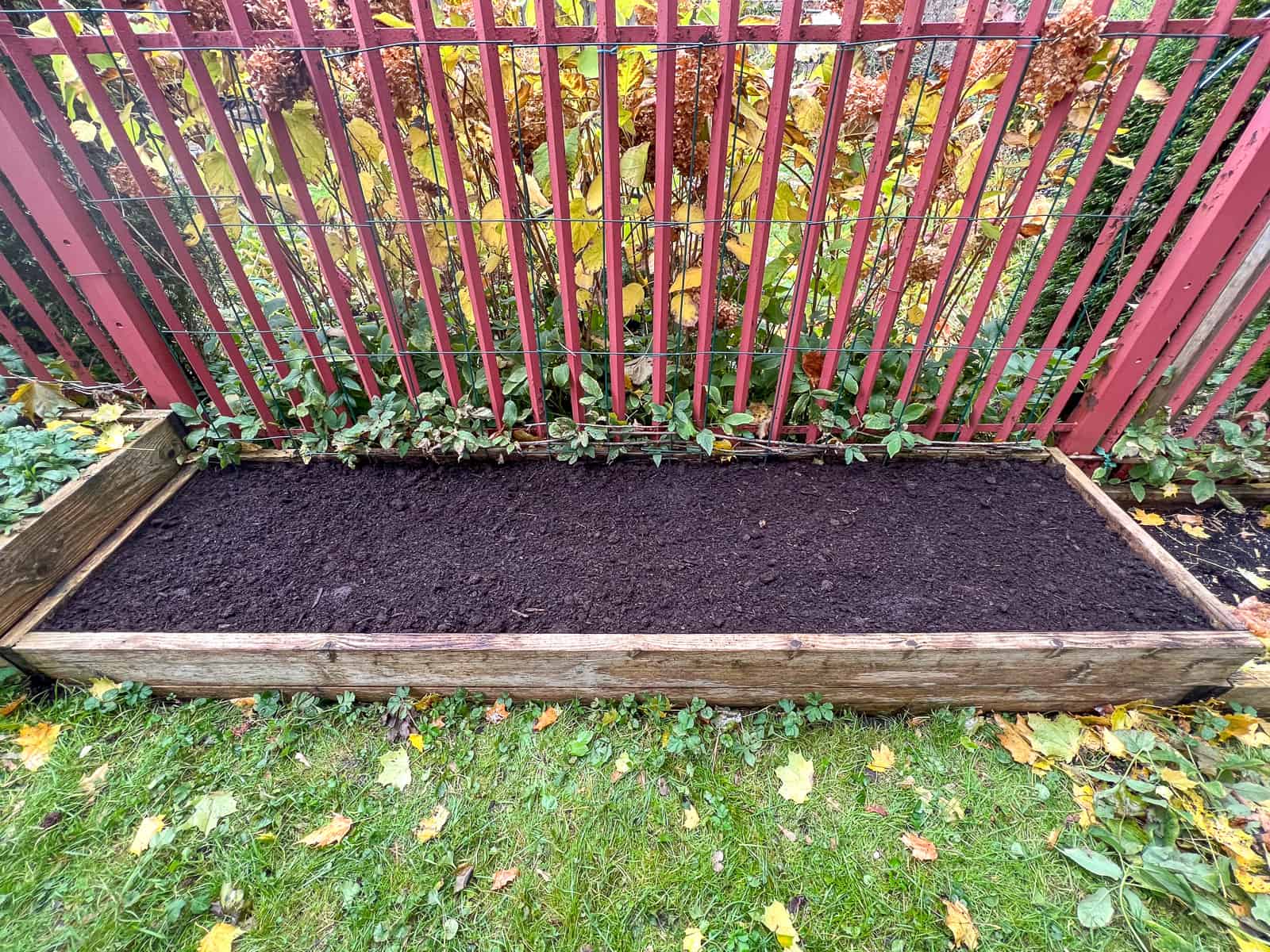
A gloriously tidy and clean raised bed at the end of the fall season, filled and topped up with nutrient rich soil, ready to start spring plantings when the season arrives.
I have learnt the hard way that skipping seasonal garden maintenance, especially in the fall, does not make for easier gardening come the next season. There have been years where, for various reasons, I did not clean up my garden properly and I completely regretted it in the spring. There is little more dampening to enthusiastic, anticipatory gardening spirits than to have hours or days of work ahead of you before the fun stuff begins.
Jump to:
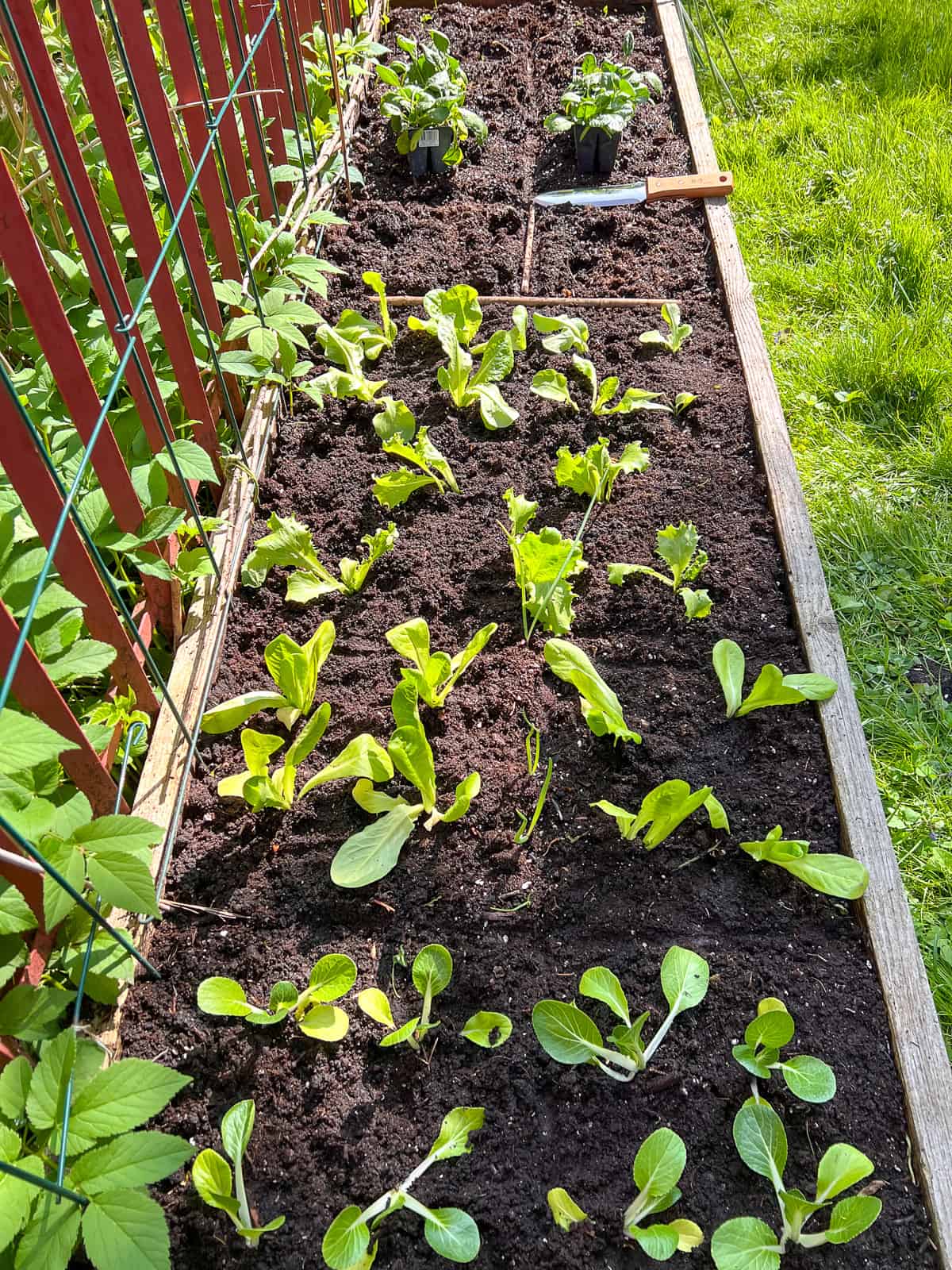
It is truly a pleasure to start spring planting in a raised bed that has been well cared for the prior season, ready to go when you are.
Establishing a routine
Taking care of your raised beds or containers at the end of the season requires only a moderate amount of work to keep your garden in prime condition. For my first few years growing things using the square foot gardening method, I was unaware of the necessity of seasonal garden maintenance. I failed to remove most of the plant debris or mulch my empty raised beds over winter. I found myself with less than optimal conditions in the spring; the upper layer of soil on my beds and containers was grey, wind burnt, and filled with plant waste.
These improperly cleared beds meant that I started off the growing season with way too much cleaning up to do, something you probably don't want to experience either! This lack of seasonal garden maintenance also required me to amend and top up my soil much more thoroughly than I would have had to do otherwise, as I had left the soil uncovered and prone to depletion.
Now I have a routine that I stick to, so that once spring arrives, my soil is in beautiful, moist, black, and nutrient rich condition, ready for a little top up with worm castings, and then on to planting as soon as I can get out there.
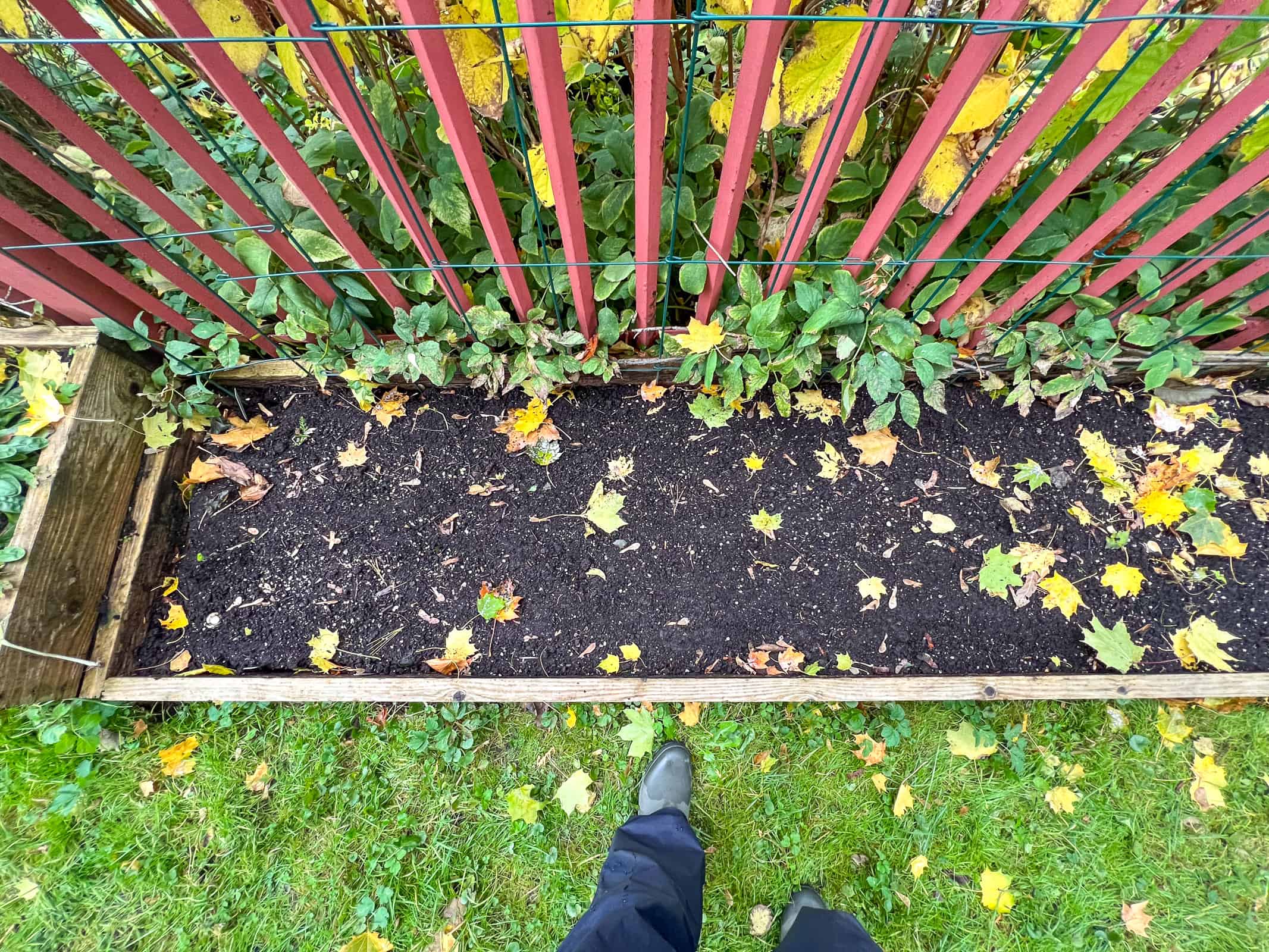
One of my raised beds before I have removed remaining plant debris or added any top up soil or amendments.
Start in the fall
As I finish up my harvests in the late fall, I clear out all unnecessary plant material from my raised beds or containers; I sometimes even find a small final harvest to discover before continuing on with the rest of my seasonal garden maintenance. I either pull up depleted plants by the root, or cut them off at the soil level, leaving the roots to decay and enrich the soil over the winter.
If I know that any of my plants had been diseased or infested with pests, I take care not to leave those roots in the ground, or any of their leaves or stems in contact with the soil. If I had an especially bad problem with disease or pests in smaller containers, for example, I might dump that soil into the compost bin, clean out the containers with hot water and soap, and refill the containers with new soil.
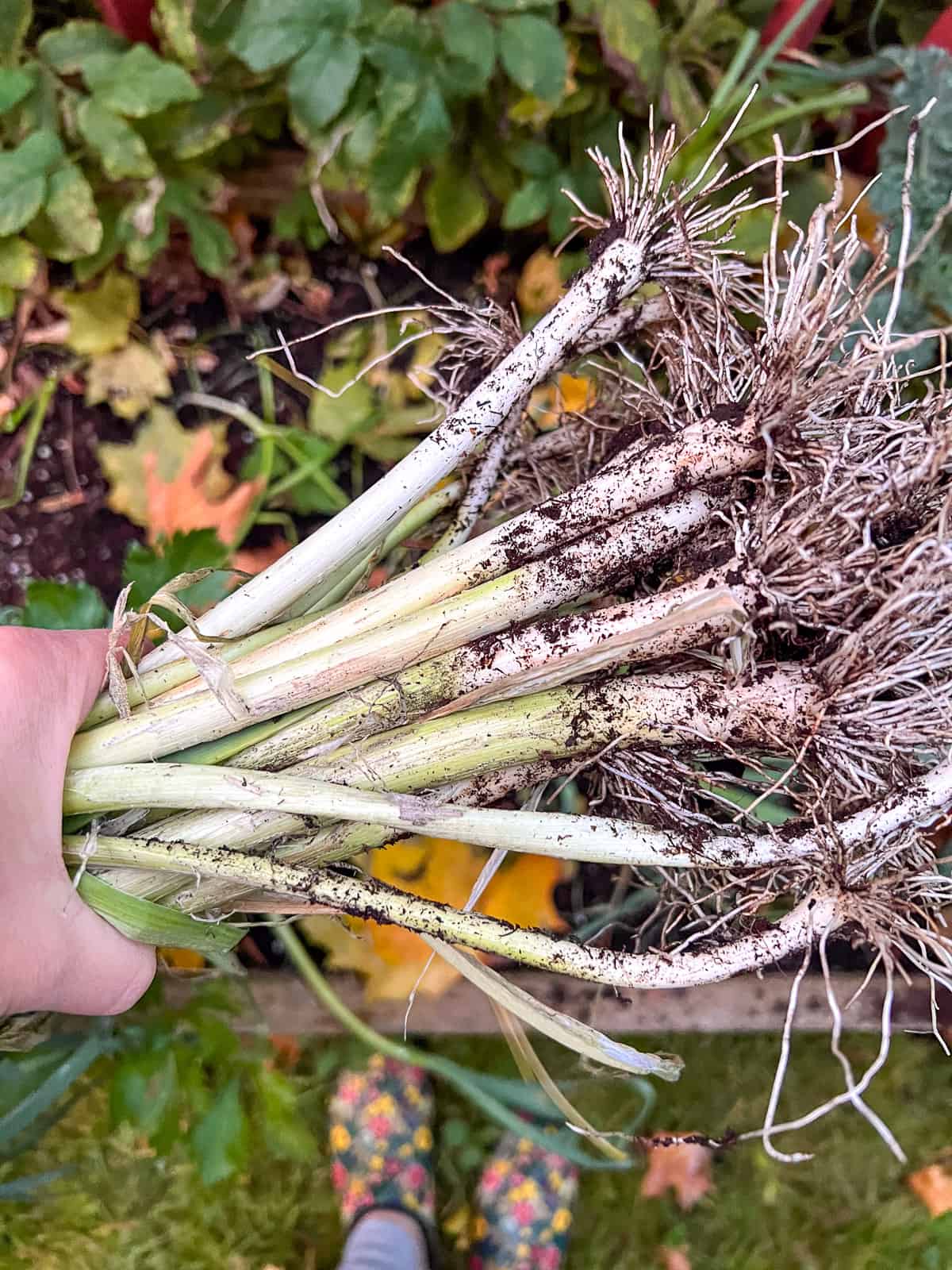
One year during my annual fall clean up I found an entire square foot of small leeks, that I had somehow neglected to harvest earlier in the season!
Perennial plants
Any perennial plants, that I know or suspect might return next year, can be cut down to soil level and left to be covered by mulch, although I also do sometimes leave things like kale stems intact and find them sprouting again in the spring. Feel free to experiment and see what works for you.
In my garden, garlic chives, sorrel, thyme, rhubarb, and oregano return each year, so I make sure to give any remaining plant matter a trim to soil level and make sure to leave their roots undisturbed. I also make a note of where they are in my garden notebook so I don’t accidentally dig them up or plant over them the following season.
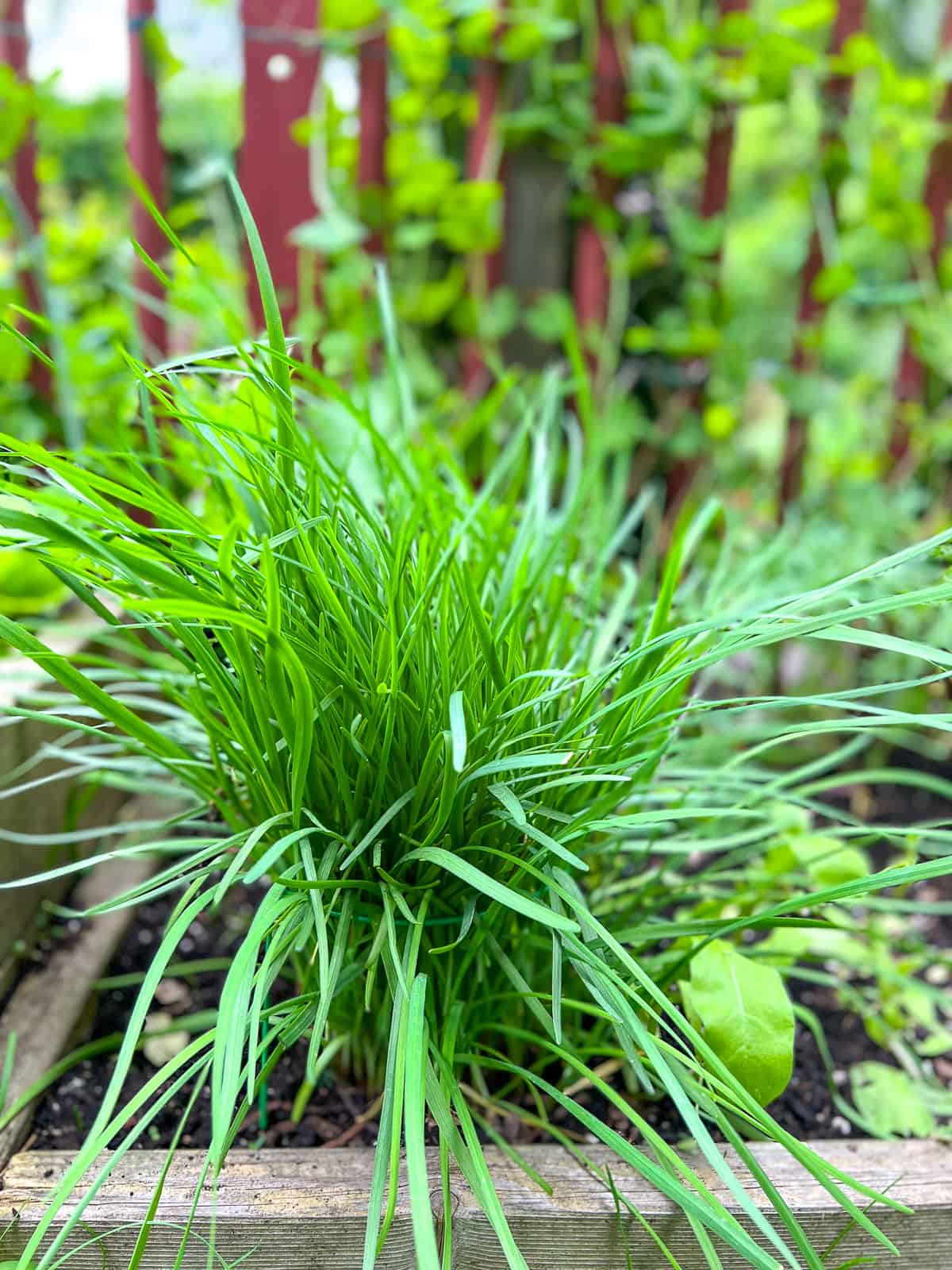
Garlic chives are one of the edible plants in my garden that returns year after year, so I make sure not to disturb the roots during any clean ups.
Sorrel is another perennial plant in my garden, and one of the first plants to poke through the mulch each spring much to my edible delight.
Soil top ups
While your initial raised bed or container set up is when you need more soil than you have ever seen in your life - just kidding, a little - I still sometimes need to top off my soil annually as part of the end of season clean up. If for some reason my soil level has really reduced and is too low - this is usually clearly be noticeable by how low the soil is against the side of the bed or container - seasonal garden maintenance is the time that I add more nutrient rich soil, and/or compost. I fill in any holes left by uprooting depleted plants, and smooth over the surface of your beds or containers with my hands without overly compacting the soil.
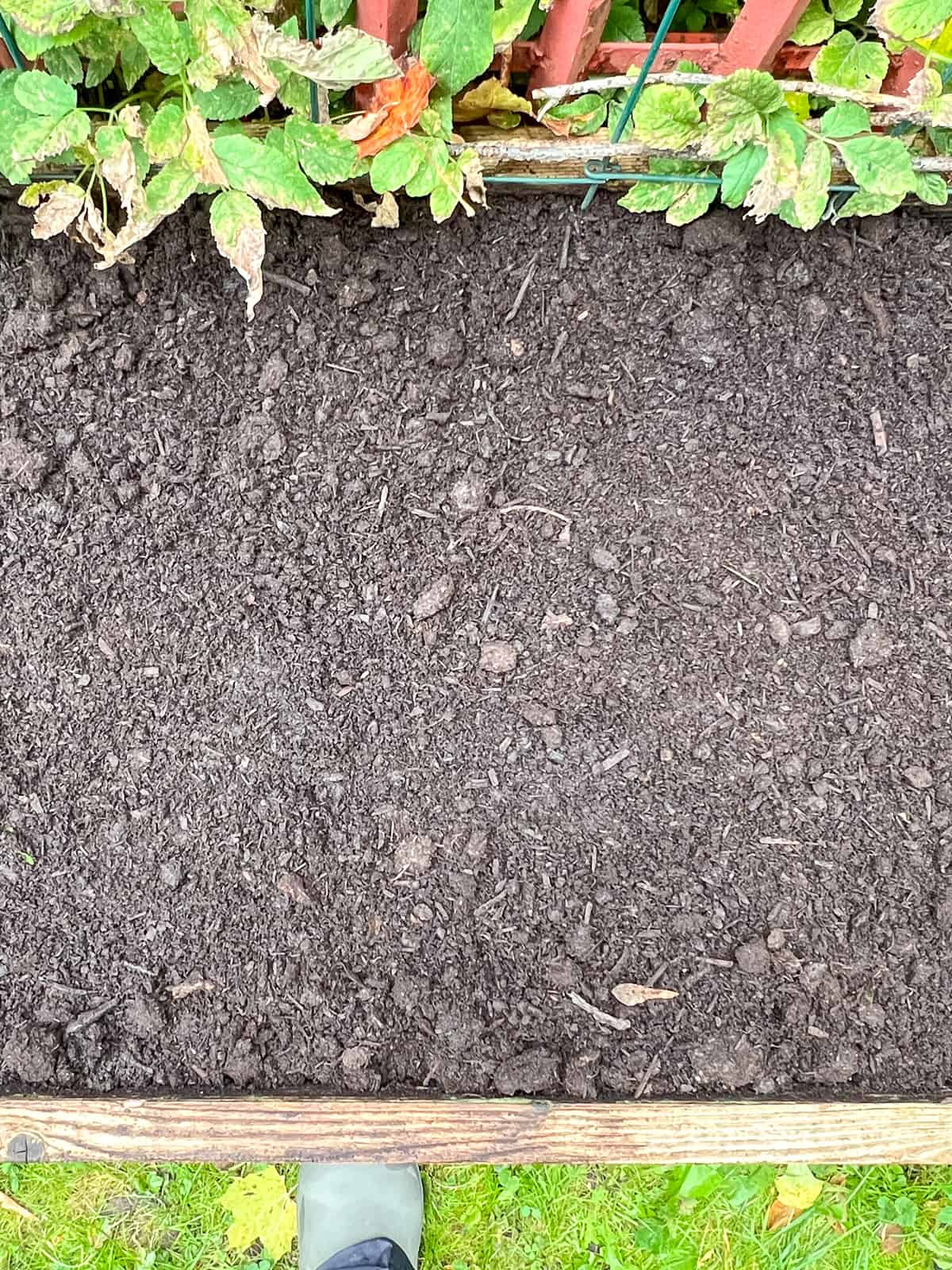
Once plant debris is removed, the raised bed is starting to look more tidy and is ready for any top ups of soil or amendments.

I usually top up my beds with a mound of more soil mix, compost, and/or worm castings as needed, which I dig into the soil just a little bit and then smooth over.
Mulch
As part of my seasonal garden maintenance routine, I mulch and cover the top layer of my beds or containers, so that they are protected from harsh weather during the winter months. This mulch will help to retain moisture and nutrients in the soil for the following growing season. There are many different options for mulching; some gardeners use straw, others gardening cloth or burlap. I have taken to using fallen leaves from a nearby maple tree. This leaf mulch is free, easy to cover the beds and containers with, and just as easy to remove in the spring.
Because my backyard can get windy, I have taken to securing my layer of leaf mulch with some reusable plastic netting and earth staples, which keeps the leaves in place. For containers that are still filled with soil, I just mulch them with leaves and then stack them in short rows in an out of the way corner of the garden.
When spring arrives and the mulch is removed, I am always greeted by clean, black, moist soil, ready for planting as soon as the soil is workable. If seasonal maintenance also becomes your routine, I imagine you will thank yourself, as I find myself doing, for the care taken during, and for the encouragement to get ready for another productive season.
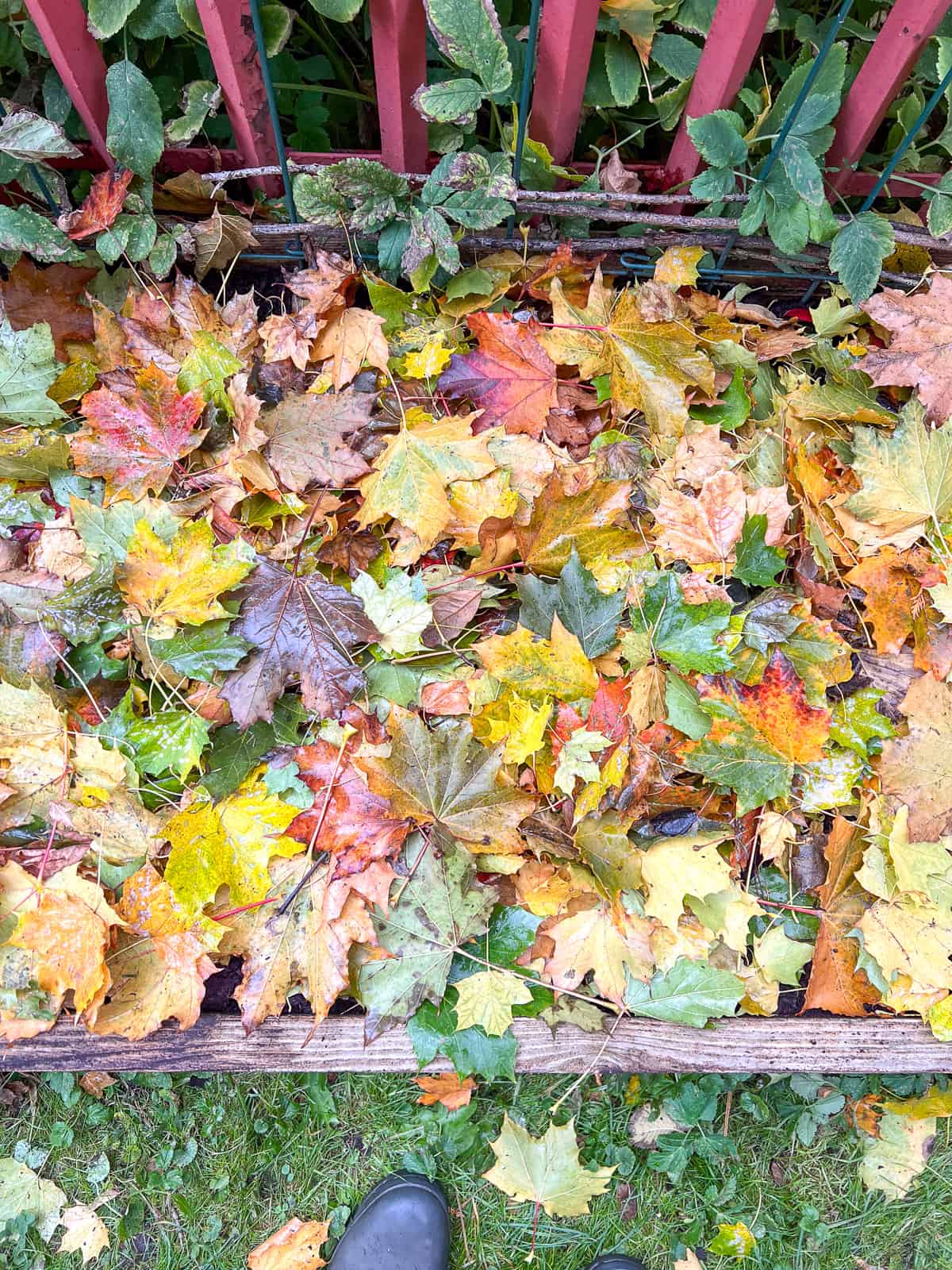
To mulch my raised beds, I gather the fallen maple leaves in my yard and pack them onto the top surface of the bed to protect the soil over the winter months.
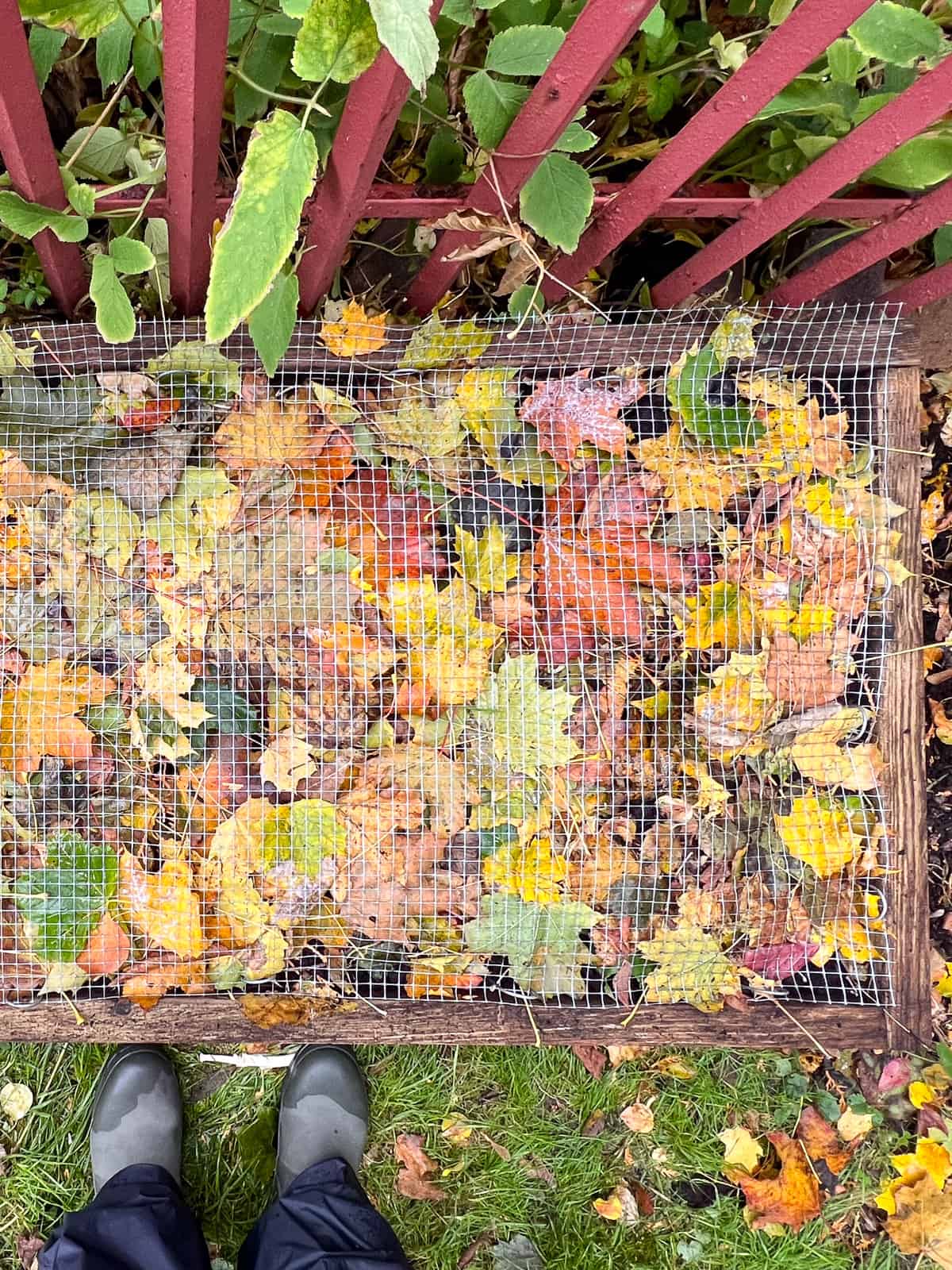
To reduce the possibility of wind blowing mulch off the top surface of the beds, I use garden mesh, secured with earth staples, to keep the mulch in place.
Keep learning
While there is always more to learn about any growing method, I always stick to the sage advice that other gardeners have shared with me - just get started, keep it enjoyable, don’t overdo it, and try by experience - essentially, don’t worry too much!
There is no perfect way to garden no matter what anyone says, and each growing situation is unique. Of course if you want more prescriptive instruction there is limitless advice on how best to maximize your garden. Try to trust that you will likely intuitively figure out what works as you go, with the information that you have, problem solving items one by one as they come up.
Join a gardening group, talk to neighbours and farmers at the market, and find reliable online advice as you need it; grow as a gardener along with your garden. I know the process of growing will enliven you with as much joy in sharing, and pleasure in discovery, as it does for me and my family.
If you have any questions that I might be able to answer, feel free to be in touch!
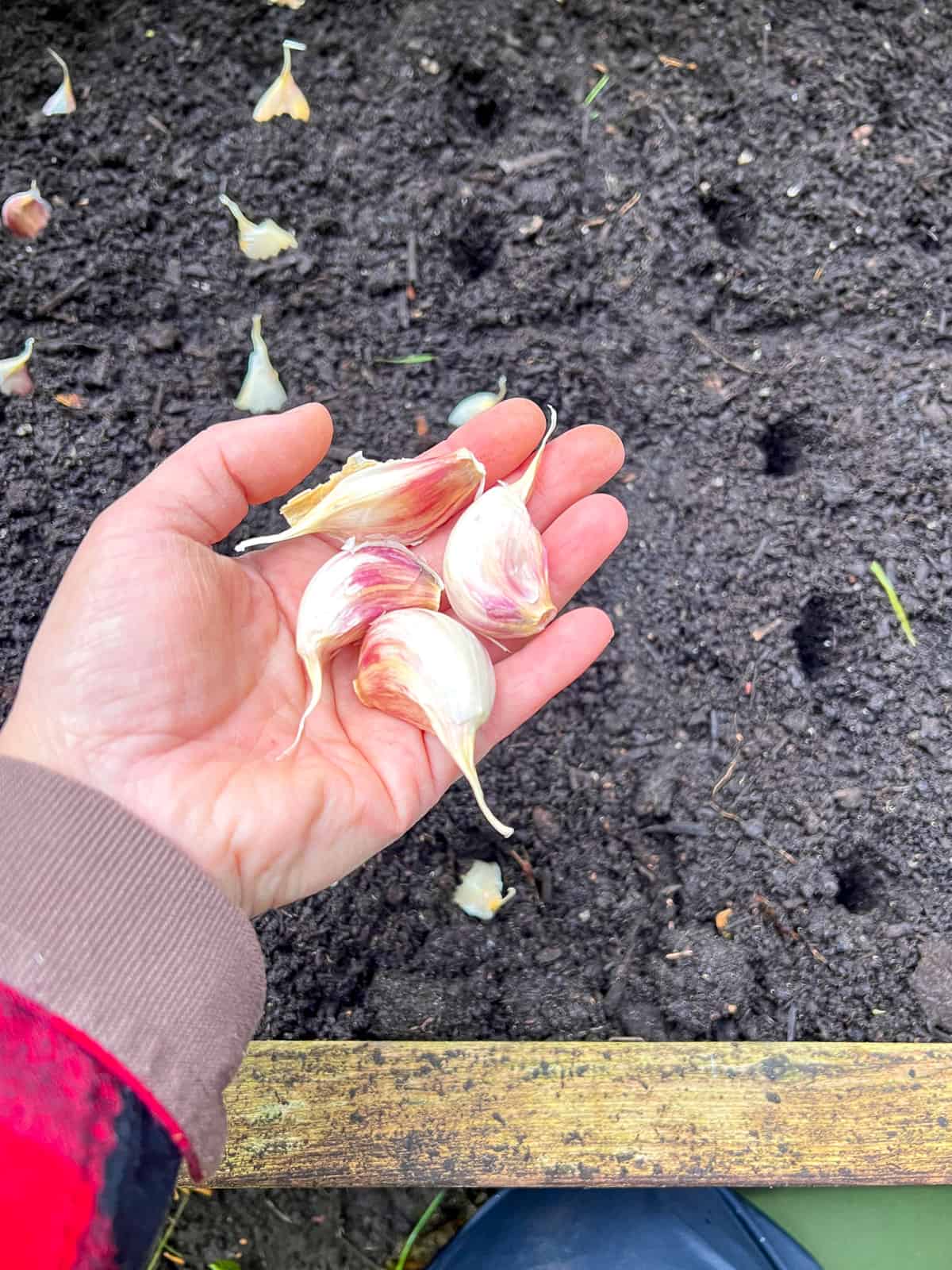
Learning to plant my own garlic in the fall, and harvest home grown garlic in the summer is something I never thought I would do!

There are untold adventures to be had in the journey of growing things!
Interested in reading more about
Square Foot Gardening?
Read more in my Square Foot Gardening series:
Favourite resources
[Note: any of the methods, organizations, products, or companies mentioned in this post solely reflect my own personal preferences.]
Growing Things - Check out my ongoing series of posts detailing my journey into square foot gardening, and some of the herbs, fruits, and vegetables that I have grown.
Square Foot Gardening Foundation - Find out more about the method from the originators of this urban friendly and social justice oriented growing practice.
Seeds and seedlings
Farmacie Isolde - I adore this small scale seed vendor as much for the pleasure of reading their seed and plant descriptions as for the truly interesting and successful harvests I have been rewarded with from using their seeds. Favourite plantings in the past have included Golden Sweet Snow Pea, Romanesco Zucchini, Bear Necessities Kale, Cilician Parsley, and numerous unusual herbs.
Richters - If you love herbs, this place has the motherload. If you are ever in the neighbourhood or fancy a drive in the country, is it more than worth it to walk through their greenhouse and become acquainted with hundreds of types of herbs, many that you may have never even heard of. Their catalogue contains a huge range of herbal and medicinal seeds, as well as a selection of interesting vegetables and fruit seeds. They also sell plant starts which I have yet to try.
Urban Harvest - This local vendor carries organic seeds for vegetable gardening essentials and also produces plant starts in the spring.
West Coast Seeds - This Canadian vendor supplies a huge range of organic and heirloom seeds, as well as handy planting charts for zones across Canada. I look to this source for regular repeat plantings and new and interesting varieties to try each year. Favourite plantings in the past have included Masai Bush Beans, Mini Purple Daikon, Hakurei Turnip, Ethiopian Kale, and numerous other varieties.
Wheelbarrow Farm - An an organic vegetable farm in Ontario that sells fantastic organic seedlings each spring, directly from their farm and at various locations in and around the Toronto area.
Soil
Pure Life Soil - This soil vender in the GTA region (formerly Pagonis Soil) is where I have sourced my high quality organic soil mix amended with worm castings, since the beginning of my gardening journey. This soil was recommended to me by other growers when I got started, and I'm still using this soil regularly 8 years later and counting. If you aren't in the GTA area, you can still check out their soil mixes as a guide to searching for something similar in your region.
Community
Farmers Markets - A wonderful source of seedlings or plant starts for gardeners in the spring and summer. I’ve learned quite a bit about various crops and have been inspired to grow new varieties by chatting with farmers at my local market, one of over 180 across Ontario.
Toronto Urban Growers - a community oriented organization that supports the efforts of urban food farmers at whatever scale. They hold information events, showcases and local growing competitions which are fun to view and enter. Your town or city likely has a similar organization nearby.
Seed Saver organizations - there are dozens of grass roots seed saving organizations around the world where you can find, exchange, or donate heirloom seeds. Use this list as a starting point or simple google 'seed savers + your country of residence' to see what is available in your region.
Seeds of Diversity - This Canadian organization dedicated to the protection and preservation of heirloom and endangered food crops is a wonderful source of information for gardeners. They they also organize ‘Seedy Saturdays’, a series of events that facilitate seed swapping between home growers.
Wherever you live, seed swaps are a great place to get and give seeds for free, making it easier to diversify your crops, keep heirloom varieties alive, give back to your local growing communities, and make use of extra seeds so that they don’t go to waste. This organization also produces handy resources and information about saving seeds from your own garden.
Curious to learn more about growing things?
Read more about edible plants that you might enjoy in your garden:

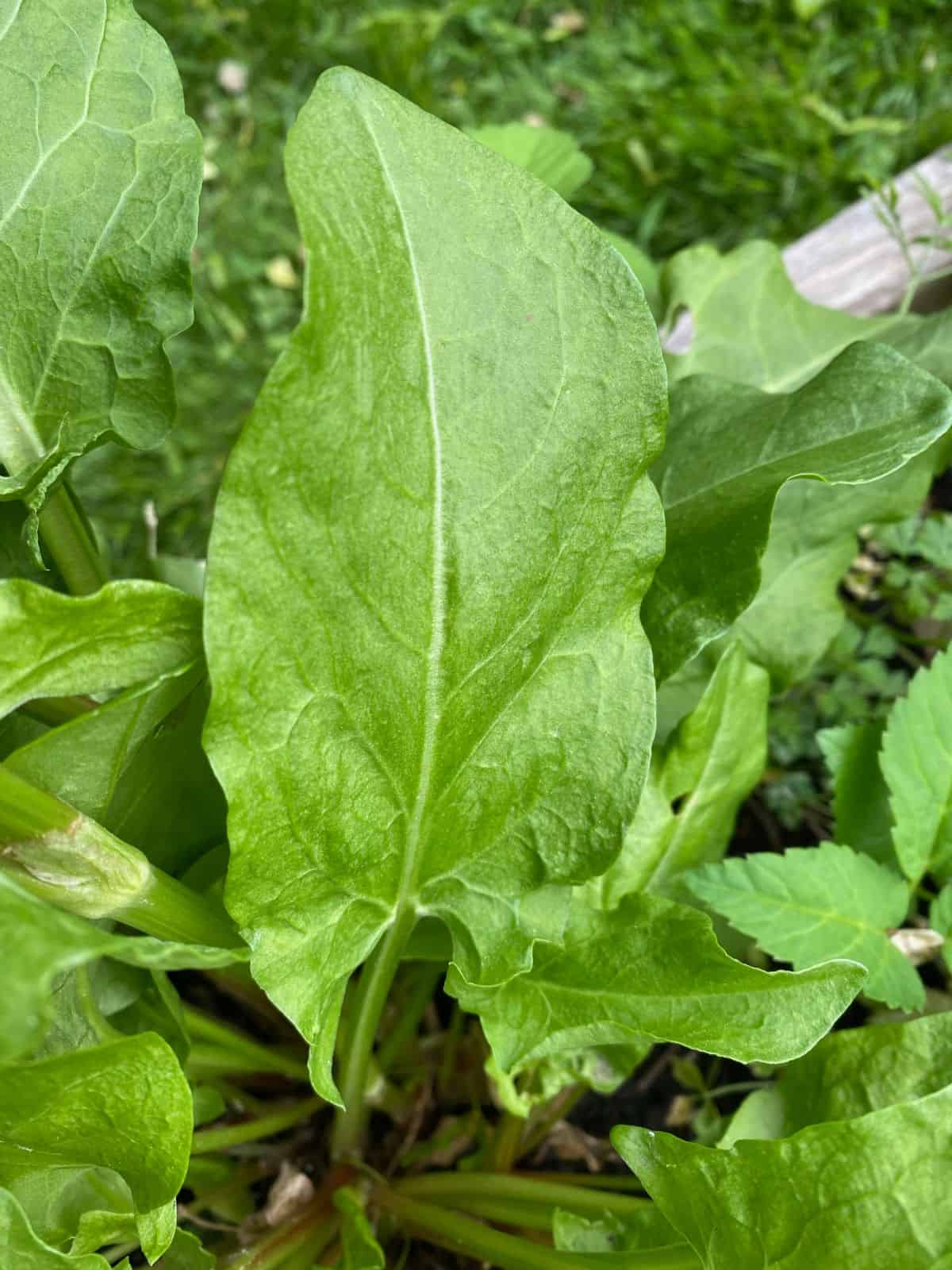


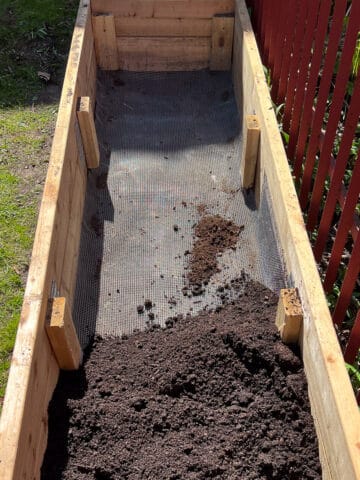

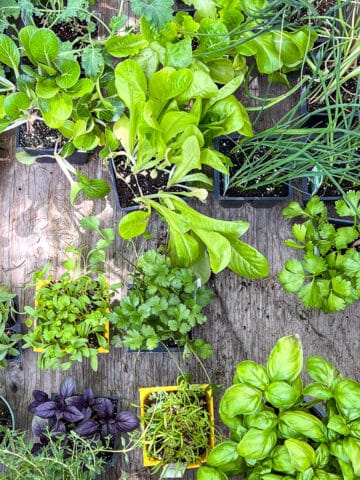
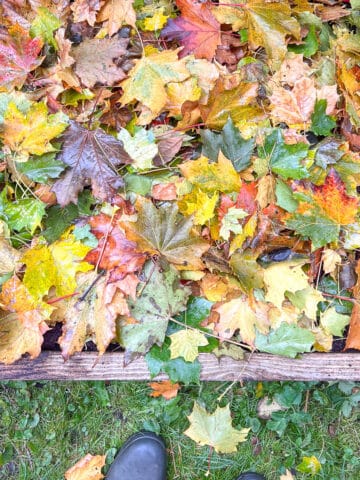
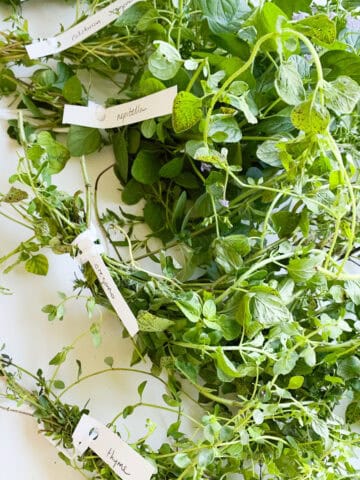
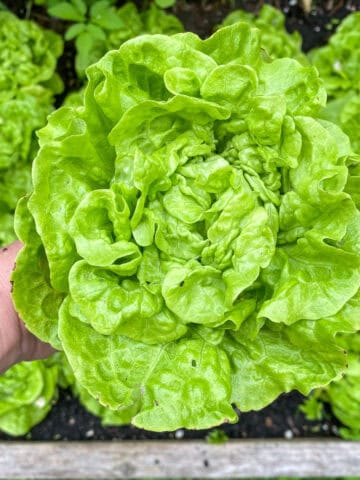
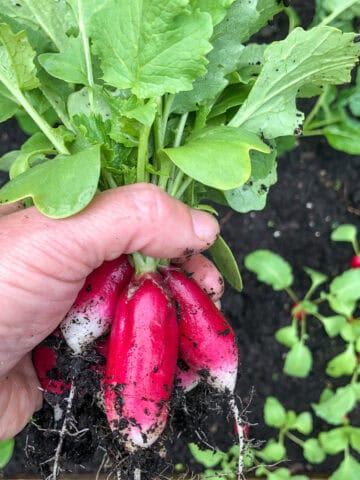
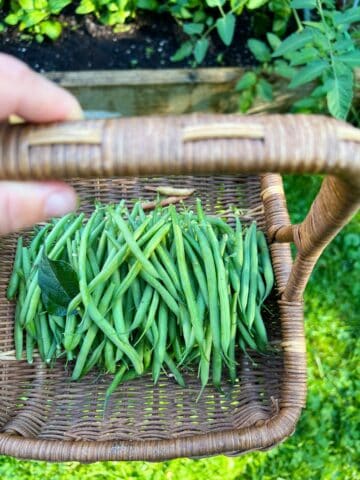
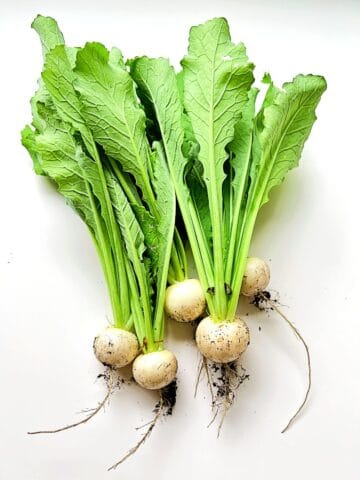

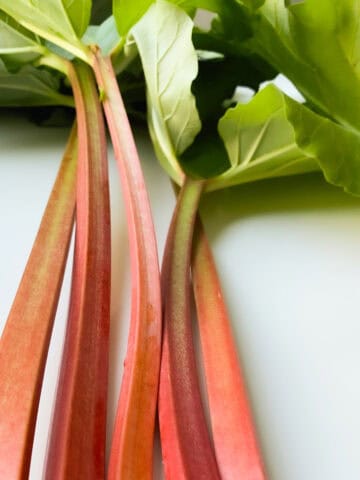
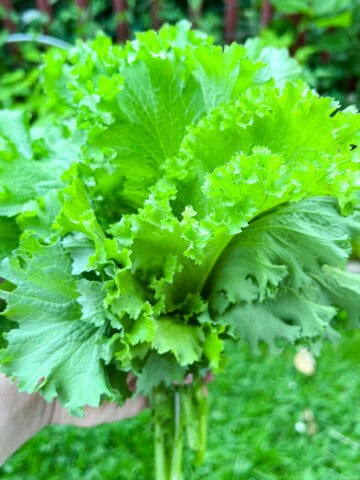
Leave a Reply